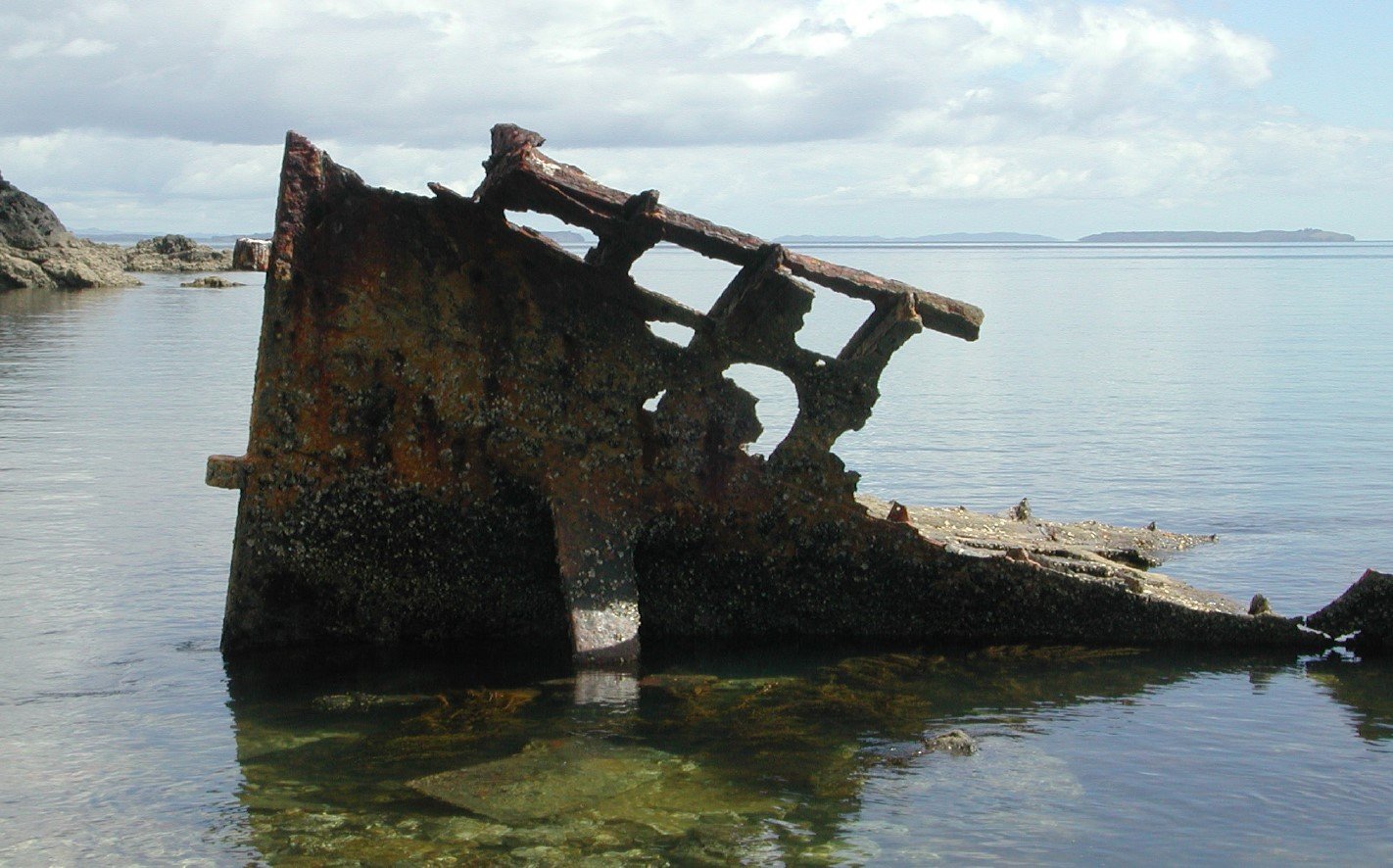Shipwrecks ahoy!
Words Alex Stone
There’s a terrific day trip for Hibiscus Coast boaties that will take you to a cove with more shipwrecks than you can shake a rudder at.
The aptly-named Wreck Bay and Boulder Bays are on the north side of Rangitoto Island, just to the west of Gardiner Gap on Motutapu, where the two islands find themselves almost kissing. This is where the ships of Auckland’s early days were sent to die. Mostly when they were half-dead already. For “This is a ships’ graveyard – but none of these ships were wrecked by bad weather or poor navigation. They were deliberately dumped here.”
The ideas of ‘Reduce, Re-use and Recycle’ had a different meaning then. After their useful sailing life expired, the ships were mostly used as hulks – grimy floating warehouses, holding coal for the fireplaces of Auckland, or the growing city’s garbage or construction waste.
The Columbia was different: once she lost her masts, she was converted, in 1936, to a floating cabaret called ‘The Show Boat’, where Aucklanders partied up large. She was burned to the waterline at Boulder Bay in 1938. Large, splintered sections of her keel and lower ribs are still there to be seen.
The most intact of the wrecks is the Rarawa, a steel-hulled schooner-rigged twin-screw steamer, originally built in Dundee Scotland in 1903. She was filled with concrete and beached a little further west than Boulder Bay, during the Second World War.
The Dartford was a three-masted barque, also built from steel in Sunderland in the UK in 1877. She was used as a training ship 1908-1914. Then an Auckland hulk. Then beached at Boulder Bay in 1946.
The Duchess, aka Lady of the Gulf, was a ‘dainty little steamer’ and was one of the most elegant passenger steamers around, and for years did the Auckland-Waiheke Island run. She was unceremoniously stripped and beached in 1947.
Then there’s Polly, who ‘broke her back’ at Whangarei in 1908, and was burned off Boulder Bay in 1928. And Elinor Vernon; Gladbrook (ex County of Anglesea); Rothesay Bay (ex Activ); the luxury passenger ship Ngapuhi; Jubilee; Arapawa; and Northern Chief, one of the biggest ships built at Freeman’s Bay, Auckland. All now silently watched by the marine life of the bays; including the underwater snails who have their shells coloured red from the rusting ships.
There were 12 ships left there – possibly 13 – for the Clara Hargrave, previously Achilles, a wooden barque built in Boston in the USA in 1856, is thought to feature in an 1877 painting of Gardiner Gap. But no remains are to be found now. Perhaps she’s buried in the mud. But not all is lost. There are plenty of shipwreck skeleton bits to be found in and around Wreck Bay. But please, take no souvenirs, just leave them there: the Rangitoto Ships’ Graveyard is part of our maritime heritage and the site is protected.
